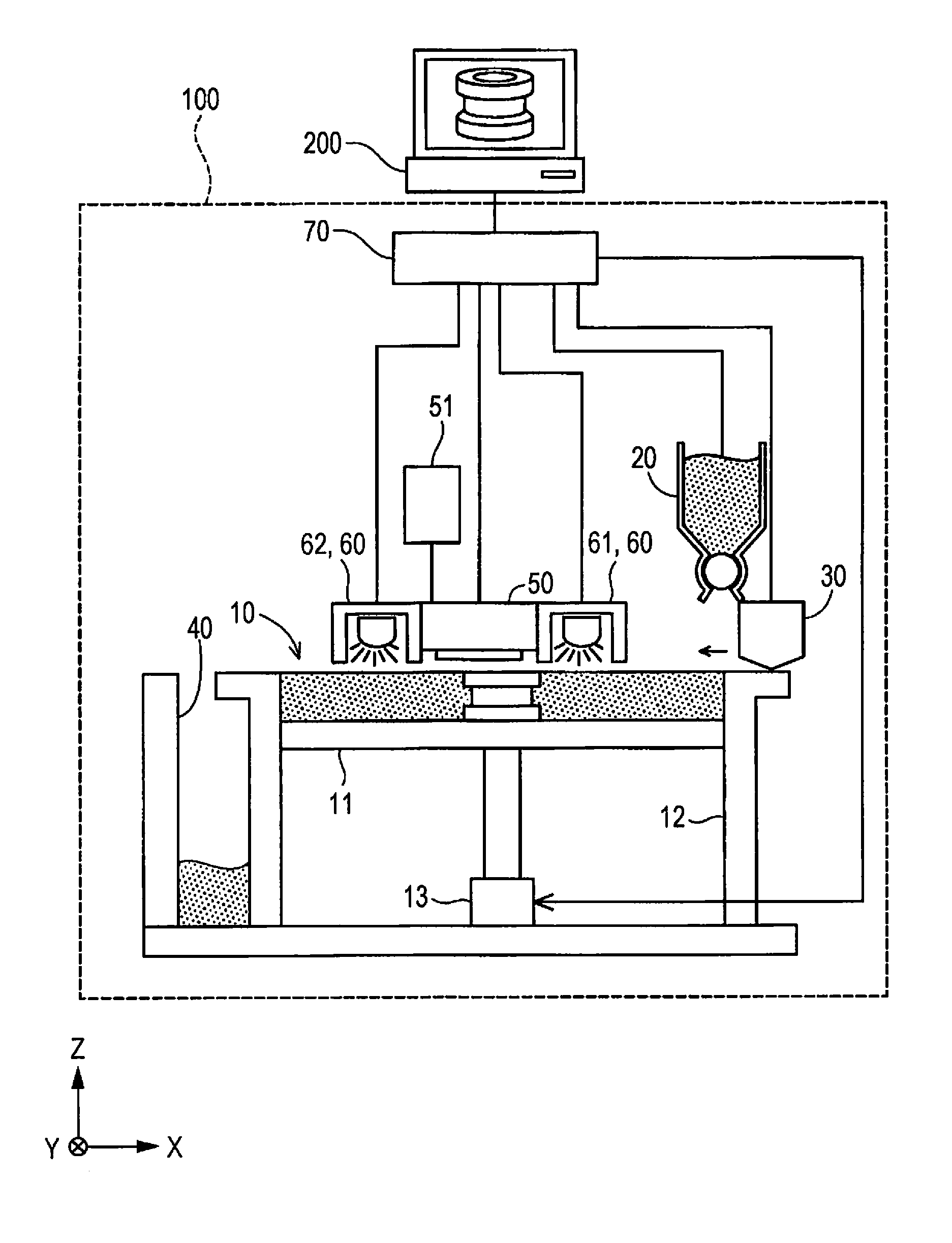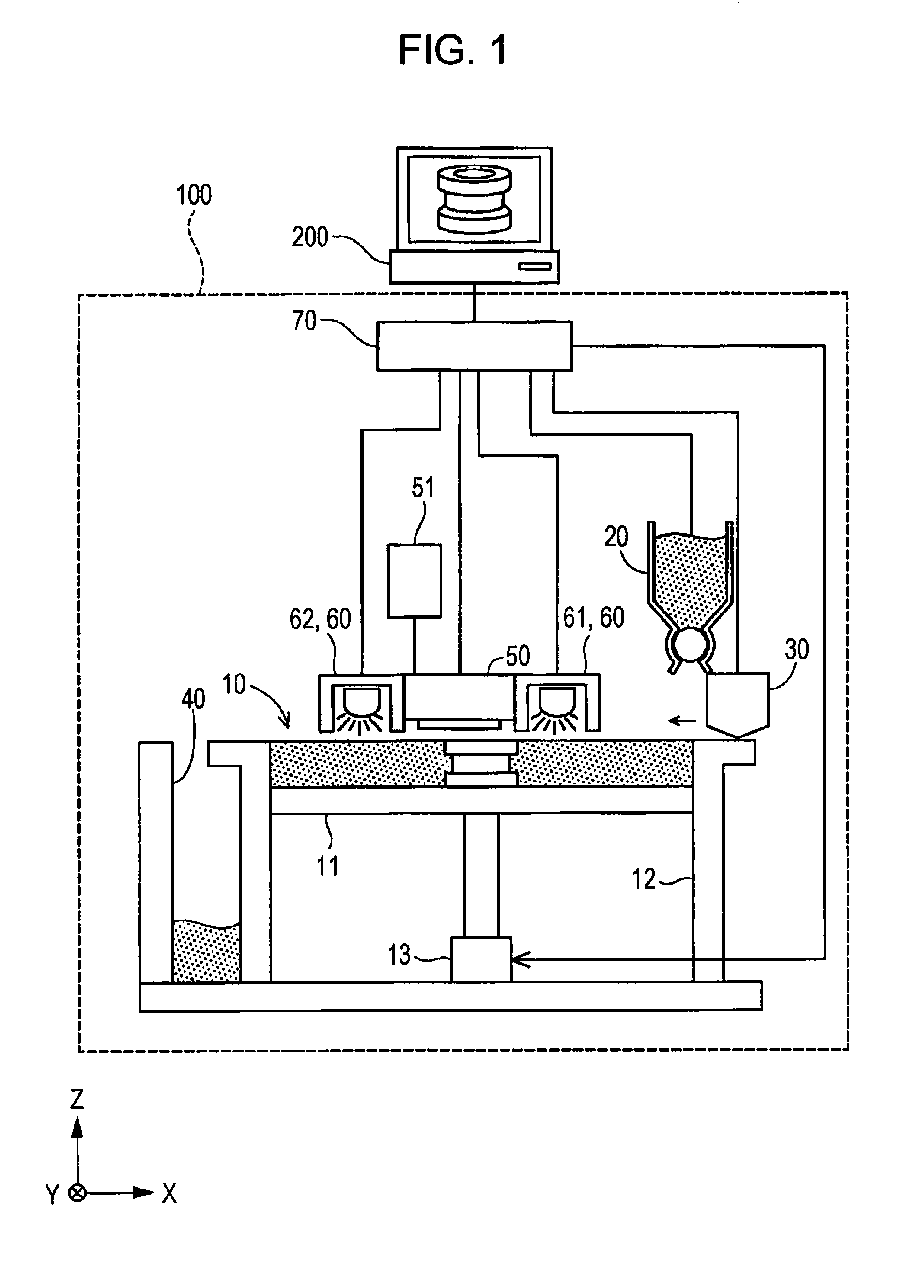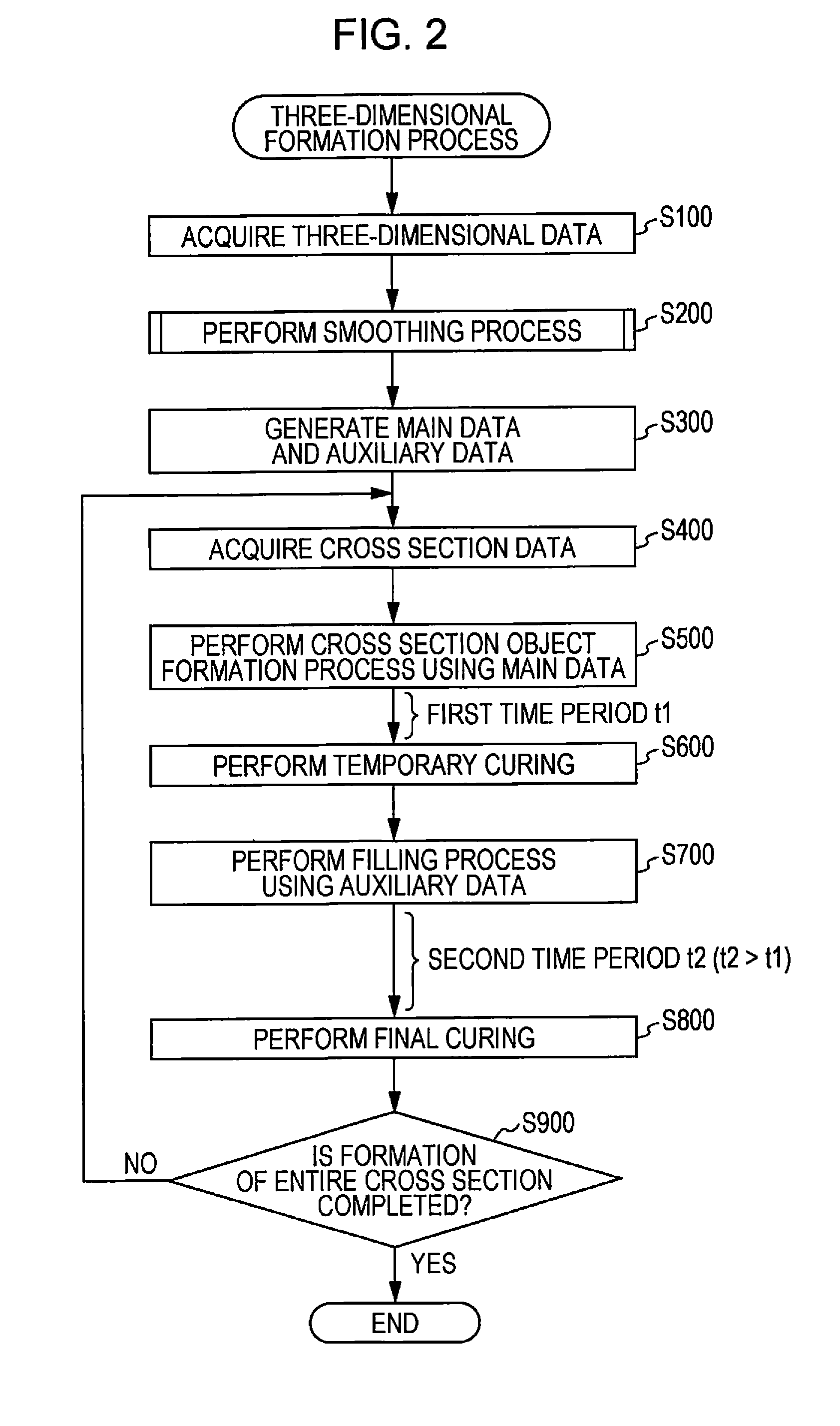Three-dimensional formation apparatus, three-dimensional formation method, and computer program
- Summary
- Abstract
- Description
- Claims
- Application Information
AI Technical Summary
Benefits of technology
Problems solved by technology
Method used
Image
Examples
first embodiment
A. First Embodiment
[0029]FIG. 1 is an explanatory diagram showing a schematic configuration of a three-dimensional formation apparatus as a first embodiment. A three-dimensional formation apparatus 100 includes a formation unit 10, a powder supply unit 20, a flattening mechanism 30, a powder collection unit 40, a head unit 50, curing energy application units 60, and a control unit 70. A computer 200 is connected to the control unit 70. The three-dimensional formation apparatus 100 and the computer 200 can be collectively treated as a three-dimensional formation apparatus in a broad sense. FIG. 1 shows an X direction, a Y direction, and a Z direction orthogonal to each other. The Z direction is a direction along a vertical direction and the X direction is a direction along a horizontal direction. The Y direction is a direction vertical to the Z direction and the X direction. The Z direction corresponds to a first direction, the X direction corresponds to a second direction, and the Y...
second embodiment
B. Second Embodiment
[0072]The three-dimensional formation apparatus 100 of the first embodiment forms the three-dimensional object using the curable liquid and the powder. According to this, the three-dimensional formation apparatus 100 of a second embodiment forms the three-dimensional object using a support material, in addition to the curable liquid. The support material of the embodiment is liquid which is cured by curing energy equivalent to the curing energy for curing the curable liquid, and is a material which can be dissolved by putting into water or a predetermined solution after the curing and can be easily removed. When the support material is discharged to the outside of the outline of the three-dimensional object, it is possible to prevent the spread of the outline of the three-dimensional object formed with the curable liquid to the outside. In the three-dimensional formation apparatus 100 of the second embodiment, nozzles for discharging the curable liquid and the su...
third embodiment
C. Third Embodiment
[0074]FIG. 10 is a flowchart showing a smoothing process of a third embodiment. In the first embodiment, the three-dimensional data representing the shape of the three-dimensional object is represented as the three-dimensional polygon data. Meanwhile, in the third embodiment, the three-dimensional data is represented as the raster data for each cross section. The configurations of the three-dimensional formation apparatus 100 and the computer 200 of the third embodiment are the same as those in the first embodiment.
[0075]In the smoothing process of the embodiment, first, the computer 200 reads the three-dimensional data (Step S230). As described above, in the embodiment, the three-dimensional data is configured with the raster data for each cross section.
[0076]Then, the computer 200 compares a resolution in the XY direction of the read three-dimensional data (XY input resolution) and formation resolution in the XY direction of the three-dimensional formation appar...
PUM
| Property | Measurement | Unit |
|---|---|---|
| Fraction | aaaaa | aaaaa |
| Time | aaaaa | aaaaa |
| Volume | aaaaa | aaaaa |
Abstract
Description
Claims
Application Information
 Login to View More
Login to View More - R&D
- Intellectual Property
- Life Sciences
- Materials
- Tech Scout
- Unparalleled Data Quality
- Higher Quality Content
- 60% Fewer Hallucinations
Browse by: Latest US Patents, China's latest patents, Technical Efficacy Thesaurus, Application Domain, Technology Topic, Popular Technical Reports.
© 2025 PatSnap. All rights reserved.Legal|Privacy policy|Modern Slavery Act Transparency Statement|Sitemap|About US| Contact US: help@patsnap.com



